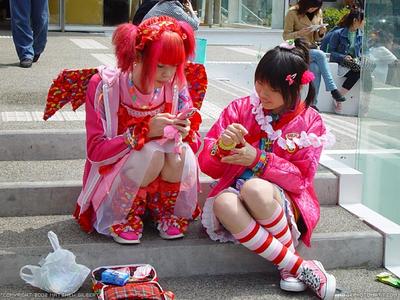Youth used to be rebellious - now rebellion is a minor facet of Youth in Australia, Singapore, Malaysia and the UK. One of the major trends in Youth over the last 15 or so years is the decline in the desire to rebel..serious rebel.
There is a more confident and comfortable feel to Youth than there used to be.
 In China there are however, signs of real rebellion with p
In China there are however, signs of real rebellion with p ost punk and post grunge bands delivering exciting sounds. In Japan too there is a different sort of desire for change that creates an exciting vibrant Youth sub-culture.
ost punk and post grunge bands delivering exciting sounds. In Japan too there is a different sort of desire for change that creates an exciting vibrant Youth sub-culture. Our work with somatic metaphors and somatic identity shows that there is a segment of the Youth market - the Still Waters who do have the some potential for this true rebellious spirit. This would appear to be a cross cultural phenomenon. Once activated, Still Waters can be the agents of change and the trend makers.

The sharmans and the great artistics of society emerge from the Still Waters type. These are the people that have the potential to drive society forward if they can trigger out of the down cycles they are locked into and commence their journey upwards. See more about somatic metaphors and somatic identity at www.somaticmetaphors.blogspot.com.
They have the necessary inner pain (aggression and anger) to produce the excitement and passion necessary for much artistic expression.









